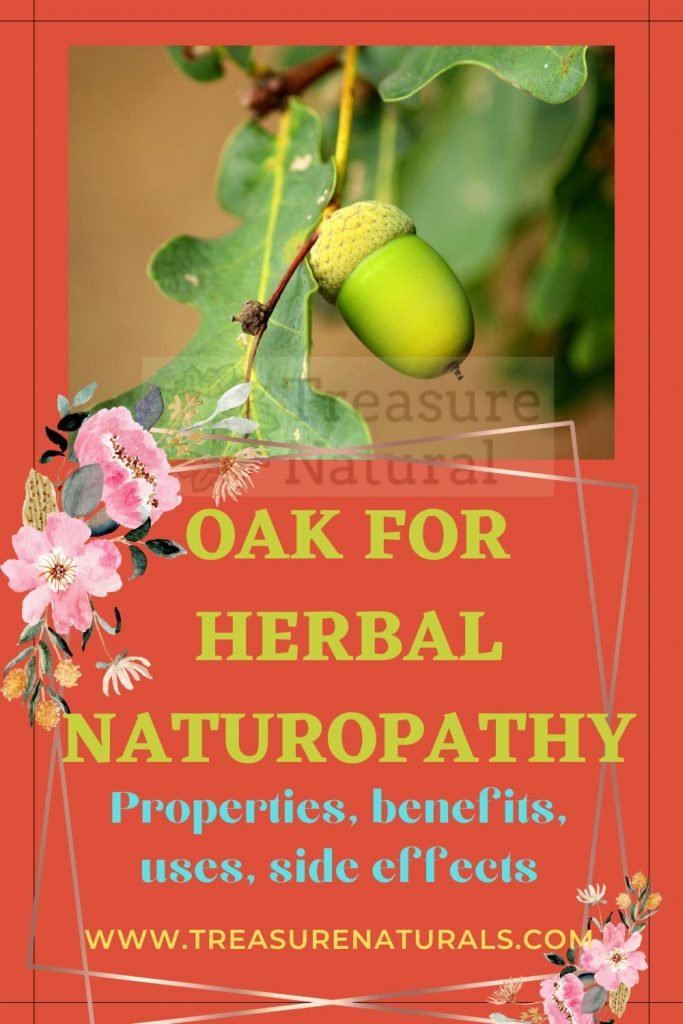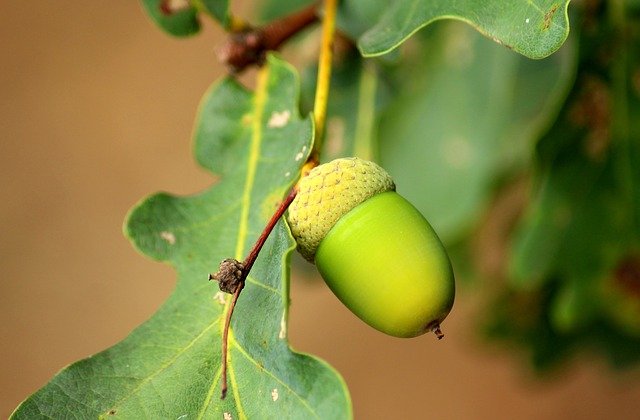
Oak is a plant belonging to the Oleaceae family. Useful against stress and to promote rest, it has a sedative, soothing and antioxidant action. Let’s find out better.
Properties of oak
The use of oak extracts has been a widespread practice and has been known since ancient times: acorn, roots and bark contain numerous active ingredients due above all to the presence of tannins such as catechins and ellagitannins; flavonoids such as quercetin; and, finally, resins and pectins very abundant in the protoplast.
The properties deriving from such a phytocomplex are known to both folk medicine and official science: oak is an antidiarrheal, antihemorrhagic, analgesic, astringent, febrifuge, antiseptic.
It is also used to promote sweating, to facilitate scarring and to regulate the intestine and sebaceous secretions.
How to use
The use as a natural remedy therefore sees the use of extracts from acorns, bark, buds, flowers and oak roots.
INTERNAL USE: herbal teas and oak decoctions can be drunk safely as in the case of gastrointestinal infections and diarrhea, while for the internal use of the extracts it is good to stay in percentages not exceeding 2%. The dry extract is also limited to 1%.
Bach flowers have an oak remedy which is called Oak which is capable of bringing fortitude, tenacity, perseverance and even physical strength just as the oak tree represents. Bach’s remedy is obtained precisely from the flowers of the oak.
EXTERNAL USE: the use of 10% mother tinctures are used for healing compresses, to soothe hemorrhoids and anal fissures, to prevent infections. The infusion or decoction is used to wash and lower the production of dandruff and control sweating of the skin.
Mouth rinses and gargles with oak infusion or decoction are indicated for the entire oral cavity as they have haemostatic, astringent, anti-inflammatory and even analgesic properties.
Contraindications of oak
The great variety and quantity of tannins present in oak extracts can irritate particularly sensitive individuals or those prone to allergies. Furthermore, they can interact with any pharmacological treatments.
Description of the plant
The generic name of oak is used to indicate a great variety of species of the genus Quercus, which includes very common plants such as holm oak, cork, oak and downy oak, English oak, Turkey oak, fragno, thorny oak and other minor species.
Some of these species are known for their grandeur and their solidity: some trees can reach up to 30 meters. The shape of the leaves is particularly variable depending on the species while the fruit produced is always and only the acorn, composed of a woody cap that only partially covers the single seed. Usually, for the extraction of natural products, the oak with the scientific name Quercus robusta, also called English oak, is used.
Habitat of the quercia
The various oak species find their ideal habitat in the northern hemisphere of the planet: North America, Europe, part of Asian Russia and a portion of northern Africa. It is able to withstand both cold and rainy climates and semi-tropical and semi-desert climatic areas.
Background

Oak has always been used by man not only for its versatile and precious wood, ideal both for construction and for the construction of barrels where alcohol to rest, but also as an archetype, a symbol of solidity and endurance.
As a symbol it is frequently used both in heraldry and in politics and in vexillology. It is found in many myths and religions: it is a basic symbol of Baltic mythology, it is the sacred tree to Zeus and Thor and was fundamental for the Druidic cults.
In California it is possible to come across Jurupa Oak, considered the oldest living being on earth: a 13,000-year-old colony of oak clones.






